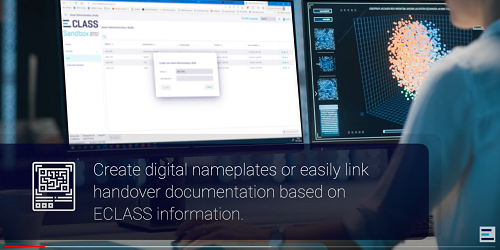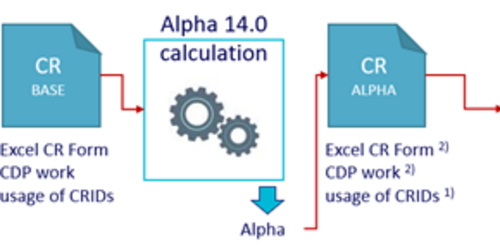The new Asset.xml: Thorsten Kroke in an interview
In an interview, Thorsten Kroke answers questions from the ECLASS community about the new Asset.xml, its use, the requirements for its use and the differences to the classical export formats ECLASS Basic and Advanced.

What is the difference between ECLASS Basic or Advanced and the new Asset.xml?
As usual, ECLASS Advanced maps the entire ECLASS content, while ECLASS Basic shows a section with fewer structure elements and "flat" properties directly below the fourth level. New now is the Asset Application Class. It contains only aspects in which the ECLASS content from ECLASS Advanced is mapped in order to completely describe a corresponding submodel of the Asset Administration Shell (AAS submodel). This is brilliant, as ECLASS users now no longer have to struggle to find all the properties for the applications around I4.0 Asset Administrations Shells.
Why do I need this?
Based on the recommendation of the Industrie 4.0 platform that ECLASS should be the semantics for AAS, the ECLASS e.V. has extended its data model again accordingly. This should make it easier for AAS users to use ECLASS and, at the same time, offer the numerous ECLASS users a way to bring ECLASS content directly into the AAS submodels. A close and friendly cooperation exists between IDTA with the standard for the Administration Shell and ECLASS e.V.; the ECLASS subsidiary BCON² GmbH is even a member of IDTA.
Which AAS submodels can I use with Asset.xml?
The Asset Application Class already includes the Digital Nameplate and the Handover Documentation.
As of ECLASS Release 14.0, further submodels will follow.
Why is the Asset.xml of ECLASS Release 13.0 free of charge, but Basic and Advanced are not?
The ECLASS Board has decided: The use of AAS for I4.0 should be accelerated without any hurdles. Thus, the advantages of ECLASS can be used directly. From my point of view this is a very good decision of the ECLASS Board. I am sure that companies will immediately recognize these advantages, such as access to all content, data exchange without loss of information and strong cost savings. For further use cases, e.g. in engineering, procurement or sales, ECLASS 13.0 will continue to be licensed.
What technical requirements do I need to meet in order to use the export format Asset.xml?
The same requirements must be met as for the classical application: ECLASS must be implemented in your system. Users usually do this with their corporate IT or approach one of our certified ECLASS IT Service Providers (Support & Service - ECLASS). They can provide technical consultation or offer the right IT systems directly. Are you an SME or would you like to try out Asset.xml for the first time? Then use the AAS Generator of BCON² at (www.bcon2.com). There you can get started directly in the browser without additional software.
If you have any further questions, please feel free to contact the ECLASS Head Office!
More news

NEW: Digital nameplates for your products
The new asset application class for Industry 4.0 applications provides all relevant content.

The new release process: all improvements at a glance
Consistent IRDIs, better comparability and faster processes